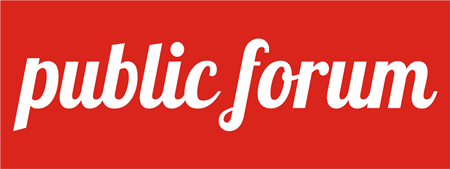Contents
Opponents of laissez-faire economics contend that supply and demand, rather than government intervention, govern the market. In a laissez-faire system, the government’s responsibility is to safeguard individual rights rather than to in any manner regulate enterprise. When it comes to economic interference, the phrase “laissez-faire” translates as “leave alone.” This entails the absence of any taxes, rules, or tariffs. The natural rules of supply and demand should have total freedom to govern the market.
Actually, proponents of laissez-faire economics view these taxes as a punishment for output. Even though the laissez-faire leadership style is not widely accepted, we have seen many successful leaders who followed this style. Steve Jobs and Warren Buffett, for instance- companies achieved many accolades worldwide by hiring the best people, trusting them, and showing high-level organizational growth by practicing the laissez-faire approach of leadership. Mentoring and guidance are the key roles of a person who follows a laissez-faire leadership style at work. They must recognize people with high skills and learn to hire them rightfully as they won’t be there to supervise them all the time. And employees must assess the rest of the progress by themselves.
Freedom of decision-making encourages innovation amongst employees. Employees with great skills and experience would not want to stay in a dominant environment. When they have freedom to work their productivity automatically elevates.
The selected candidates will get a salary range between Rs. 5,200 – Rs. 20,200. This economic model of the market is followed by countries like Denmark, the UK, Ireland, Switzerland, etc.

I found myself surprisingly in agreement on many of Keynes’ points. Keynes’ argument was for Germany’s capacity to pay reparations as opposed to the financial what is the laissez faire view point castration that eventually happened to the country. The natural consequence of Germany’s total plundering was the rise of National Socialism and Hitler.
Since the leader is not available all the time, employees tend to show less care and concern toward their projects. The laissez-faire style majorly depends on its employees’ abilities- it fails to be effective if the team lacks knowledge or has less experience. This can result in poor job performance and decreased job satisfaction. In a laissez-faire leadership environment, it is acceptable for employees to make mistakes in the innovation process.
The UK’s laissez faire approach to energy needs a good rethink
Since leaders who follow the laissez-faire approach- have employees who can work independently and achieve organizational success with minimum guidance. Derived from the french word ‘Laissez Faire’ meaning “leave it alone” or “let it be,” stands accurate for the laissez-faire approach of leadership. It is relevant for companies who support independence and creativity with https://1investing.in/ an initiative. Leaders are the decision-makers in any organization, and every leader follows a type of leadership style depending on their attributes and personality traits. Today, we discuss Laissez-Faire leadership and its hands-off approach, characteristics, advantages, and disadvantages. The basic ideas of Adam Smith were supported by Thomas Malthus and David Ricardo.
The theory stemmed from French economic philosophers of the 18th-century Enlightenment. They criticized the idea that nations grow wealthy by placing heavy tariffs on foreign goods. Instead they argued that the government regulations only interfered with the production of wealth. They believed that if the government allowed free trade the economy would prosper. This impact may be observed in neo-liberal movements, which frequently lead to the privatization of ineffective and underfunded public services. In the fields of healthcare, electrical generation, and water supply, this has occurred all over the world.
Simply put, laissez-faire economic theory advocates letting the market operate independently. The effective production of products and services will be guided by the rules of supply and demand without further assistance. The key tenet of the laissez-faire economic theory is the limitation of government involvement in the market. Laissez-faire economics holds that when the government upholds individual rights while refraining from taking additional actions, the economy is at its healthiest. The French term “laissez-faire” translates as “let’s do” or “leave us alone.” As a result, they are opposed to corporation taxes, minimum wages, levies, and other forms of government interference in the economy.
Indiankanoon.org needs to review the security of your connection before proceeding. It’s true that nanny states deny people autonomy and encourage an over-reliance on handouts, which can destroy innovation and growth. But given the enormous need to save on energy costs and risk of supply problems, such objections feel absurd in this case. One in five UK households with dependent children experienced fuel poverty in 2020, and the outlook for this winter, given surging prices, is grim.
‘Laissez-faire’ is associated with which form of economy?
The idea that only one view can be true seems to be surviving more among specialists and ideologues. Following the outbreak of World War II, Keynes’s ideas concerning economic policy were adopted by leading Western economies. Keynes died in 1946; but, during the 1950s and 1960s, the success of Keynesian economics resulted in almost all capitalist governments adopting its policy recommendations.

In these cases, leaders fail to motivate, recognize, or appraise the team for their efforts. Mixed economies typically maintain private ownership and control of most of the means of production, but often under government regulation. Thomas Hobbes believed that unlimited autonomy would lead to anarchy for both producers and consumers in a state-of-nature economy. In such an economy, wealth and income inequality can fuel a vicious cycle whereby inheritance is crucial to one’s position in society’s financial hierarchy. Proponents of laissez-faire contend that the economy is best served by a lack of import and export taxes, tariffs, and controls.
Training and support
Socialist economy means the system under which the economic system is controlled and regulated by the government so as to ensure the welfare and equal opportunity to the people in a society. Laissez-faire is the belief that economies and businesses function best when there is no interference by the government. It comes from the French, meaning to leave alone or to allow to do. It is the guiding principle of capitalism and a free market economy. They supported limited government intervention in corporate, industrial, and economic issues as well as the free market’s natural order of economic competitiveness.
- This can result in poor job performance and decreased job satisfaction.
- The predictions of Malthus seemed to be coming true in the 1840s.
- But then having almost agreed with Marxists in diagnosis, Keynesians differ in their prescription.
- Instead they argued that the government regulations only interfered with the production of wealth.
Or it’s a management that is sufficiently desperate for good headlines about its hiring and employment practices that it is willing to raise pay a bit to its lowest-paid workers. While autocratic leadership is considered demeaning and overpowering, laissez-faire leadership is quite the opposite. This particular leadership style is not accepted widely, but we can’t ignore it as it has its charm and benefits. It helps employees to increase productivity and provide job satisfaction. A mixed economic system is a system that combines aspects of both capitalism and socialism. A mixed economic system protects private property and allows a level of economic freedom in the use of capital, but also allows for governments to interfere in economic activities in order to achieve social aims.
John Maynard Keynes
It’s one thing to hope for the best, quite another to fail to prepare for the worst. Of course, a public information campaign should only be part of a demand-reduction strategy. US President Dwight D led the construction of this highway system after signifying the importance of transportation and automobiles for the country’s future. A project so magnificent would not have been possible without Eisenhower’s hands-off approach. He gave the engineers, contractors, and other skilled workers the authority and freedom to complete this project. Too much independence can lead to isolation and affect team-building opportunities.
He allowed mistakes to happen and felt it was integral to building a business. Because leaders are hands-off in their approach, employees can be embrace personal growth and stay highly motivated. Also known as “delegative leadership,” laissez-faire assesses the individual talents of each worker, a workplace environment- suitable for employees who have a forward-thinking intelligence and are resourceful. Employees are allowed to complete tasks using their skills as long as they do not hinder the company. Instead of making definite job responsibilities and micromanaging employees, laissez-faire leadership allows workers to enhance their creativity at work and attain organizational goals.
The purpose of a closed economy is to provide domestic consumers with everything they need from within the country’s borders. The closed economy is self-sufficient, which means no imports come into the country and no exports leave the country. Mixed economies socialize select industries that are deemed essential or that produce public goods. According to Adam Smith, monopolies may form in which they control supply, impose higher prices, and provide workers with lower incomes. The working class endured uncontrolled working conditions and enormous wealth disparities throughout the industrial revolution as major businesses acquired more influence under laissez-faire laws. These scholars attempted to analyze wealth and economic creation using scientific concepts and techniques.
Second is that it provides incentives to act on that information. Buyers would act to maximize the satisfaction they get from the products they buy, given the limitations of their incomes. In pursuing their own self-interest, the sellers and workers ultimately do that which is best for society as a whole , even though doing so is not their intent and even though they may not know they are doing so. This is the magic of the market and thus called “The Invisible Hand”. This theory of Free Market or Free economy was defended by Adam Smith, a professor at the University of Glasgow in his 1776 book The Wealth of Nations. He argued that the economic liberty guaranteed economic progress.He claimed that government need not interfere in the economy.
Laissez-faire is criticized for allegedly causing poverty and economic imbalances. They argue that the concept of allowing an economic system to function without control or correction effectively rejects or further victimizes people who need help the most. Despite this unfavorable beginning, laissez-faire principles prevailed during the Industrial Revolution of the late 18th and early 19th centuries, further refined by British economists like Smith and David Ricardo. And, as its critics pointed out, it did lead to dangerous working conditions and widening income inequality. One of the first developed economic theories is the laissez-faire philosophy, which gained popularity in the middle of the 18th century. The Physiocrats, a group that existed in France from around 1756 to 1778, are credited with developing it.
Harris has a few reasons, however, why Americans should accept the consensus of economists when they do exist. But when they do share the same view point, it’s on a point that everyone else – you know, normal people – doesn’t seem to agree with. Keynes gives a brief history of philosophies that led to the rise and fall of Laissez-Faire. Implicitly, there is a fourth remedy—a laissez-faire approach that encourages, but does not require employers to take actions in their own interests to raise entry-level wages and improve jobs. Until recently, this last idea often evoked some eye-rolling, as if to suggest that no one should hold their breath waiting for a hands-off approach to work. At worst, laissez-faire shows passivity or avoidance of true leadership.






Recent Comments